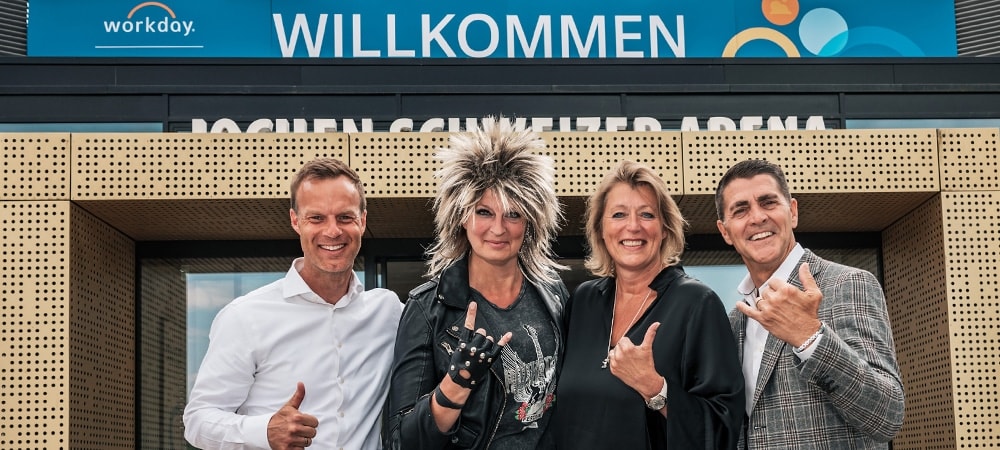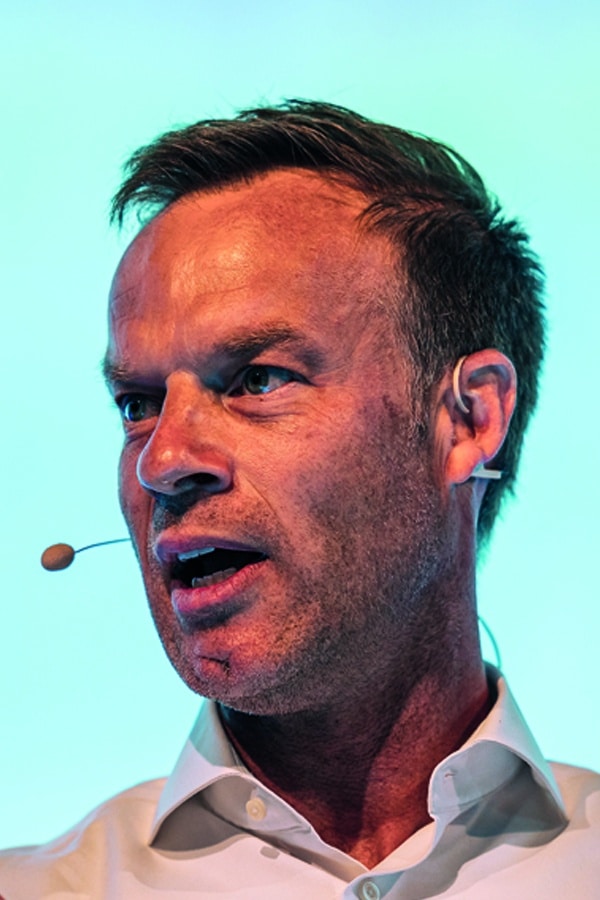One for all


Workday has entered the cloud era without any legacy issues and can therefore deliver maximum functionality, information and added value to its existing customers. The principle is simple but efficient: at any given time, the cloud is at the same version level for all users in the areas of people management, finance and controlling. This not only ensures stringent IT administration, but also adds analytical value. With the ano-nymized data, a best practice is quickly found.
Workday is a provider of enterprise cloud applications for finance and human resources, designed to help users adapt to current realities and thrive in a changing world. Workday's financial management, human resources, planning, expense management, and analytics applications are based on AI and machine learning, which, through Workday's stringent version management, brings great benefits to the company itself, but also to users.
Added value: Standard
Very close to standard is a he-man challenge for most ERP users. At a Workday event in Munich, many existing customers were on stage and quickly agreed that the added value of a compliant and standardized implementation is there in any case - even if it is not completely painless. Many Workday existing customers first had to cut off all the braids at the beginning of the cloud implementation and the project managers always have to go through many discussions with the departments.
Carl Eschenbach, Co-CEO at Workday, almost sums up his own core competence again in the E3 exclusive interview: "We are a company that has relied on the cloud from the very first minute when developing and building its platform. We are a cloud-first cloud-only company. We started with HCM in our core platform. And even here in Germany, there's been a massive shift to the cloud in HCM."
What emerges at the end of most Workday implementations is that there are two winners and no losers: Workday users are left with a clearly structured system that often delivers more than initial expectations. Because all Workday users are on the same release, all users also get the new features, ideas, and innovations from other Workday customers. If a Workday customer has an innovative idea and can convince Workday of it, then weeks can go by.
later all users will benefit from it.
Naturally, Workday is also a winner of this transparent and stringent system: there is only one version to manage, generically domiciled in the cloud. The fact that it is cloud-only and pure-cloud seems strict and constricting at the outset, but subsequently shows high business, organizational and technical benefits. Workday and its implementation partners take this rigorous approach because they know the downstream benefits for users.

Carl Eschenbach,
Co-CEO,
Workday

Christopher Knörr,
Group Vice President DACH,
Workday
The alternative
Workday is gathering more and more users, including from the SAP community: As a provider of enterprise cloud applications for finance and human resources, Workday most recently won over Mercedes-Benz Group to use Workday Human Capital Management (HCM). The goal of the new HCM is to harmonize, simplify and automate HR processes globally based on a unified data foundation. "Mercedes-Benz is a globally loved brand and an iconic German manufacturer and innovator with a history of more than one hundred and thirty years. We look forward to a long-term partnership where we can support the company's digital transformation goals. This confidence in Workday encourages us to continue our successful approach of delivering best-in-class technologies to help businesses succeed in a time of change," said Christopher Knörr, Group Vice President for the DACH region at Workday.
In Europe, there is probably more skepticism about cloud computing than in North America. Co-CEO Carl Eschenbach comments: "First of all, going to the cloud is clearly associated with benefits. I think it lowers the total cost of ownership because you basically outsource all the support and maintenance of the hardware and software to the cloud. So cost reduction, and secondly, I think innovation is much faster in the cloud. If you go to the cloud, you have the innovation advantage of Workday."
A key parameter of digitization is time, i.e. the speed of implementation and introduction of new business processes. "I believe that innovation is accelerated by moving to the cloud," Carl Eschenbach also says in the E3 interview. "And then I would also say that we are really differentiating ourselves from the competition simply because we are stronger in HCM in the cloud today because of our market share. When it comes to moving financial processes to the cloud, especially in certain industries like services, indus-try or public sector, a lot of customers are using Workday much more because they already have HCM. And when you think about planning, when you do financial planning for certain industries, a big part is workforce planning. So we tie all of those things together and that's how we stand out from everyone else."
Financial planning
In addition to people management, financial planning is a challenge in many companies. While operational finance is often adequately covered by SAP in larger companies, there is sometimes a blank spot when it comes to planning. Alongside SAP partner and cloud-only provider Blackline, Workday is looking to get its foot in the door with SAP's existing customers after its HCM success. "One product that allows us to connect with customers is our planning product, which we acquired through an acquisition years ago," Workday co-CEO Carl Eschenbach said, explaining the strategy. "We don't have to sell a complete HCM or finance solution. We can start with Planning and then deliver finance or our full HCM platform - or both. Or we can sell the solution to our HCM customer base."
Most people associate the topic of planning with financial planning. In fact, especially in certain industries, planning is mainly about human resources planning, because those are the biggest costs, says Carl Eschenbach. "That's why we talk about human capital planning, or workforce planning and financial planning, because in uncertain times you have to plan more flexibly, right?" asks Workday's co-CEO. "Because to be honest, supply chain situations and inflation require more planning. What are the consequences for employees? What is the impact on finances or on our cost situation? That's why it's so critical."
The difference to SAP clearly lies in the cloud approach; while the ERP world market leader still relies on many and different cloud offerings and IT models, providers like Workday only ever have one release. "Workday has a single, unified data model, unlike SAP," thus emphasizes co-CEO Carl Eschenbach. "Every Workday customer benefits from our multi-tenant cloud, where everyone is on the same software release and working with the same data model. That means we don't just offer a simple way to move their processes to the cloud, we invest significantly in professionals, processes and technology to ensure our customers have the highest levels of scalability, data security and regular updates."
Forward-looking scenarios, fewer surprises
Forward-looking planning is important for every company, especially in economically challenging times. For many companies, the annual planning processes mean a lot of consolidation work: data has to be prepared, often transferred between different systems, then collected and passed on to Controlling for checking. Philipp Dobberow, Director Controlling, Reporting and Procurement at Scout24, describes his problems: "My team carried out quality and data checks before we transferred everything back into the consolidation system to create cross-customer reporting. Often, the first iteration didn't get you where you wanted to go - multiple iterations were necessary, which could lead to a four-month stalemate in the budgeting process."
With unpredictable lockdowns during the pandemic, Scout24 was looking for a new agile planning system to make data-driven decisions faster. "We were looking for a collaborative tool so that all stakeholders could be involved in the planning and forecasting process," explains Dobberow. "We wanted to process all the data in real time and have a continuous planning and forecasting process so that we could take a rolling approach throughout the year. And we wanted it to cover all of the company's sub-plans so that each sub-area could be combined into one overall financial plan."
The company chose Workday Adaptive Planning, a flexible web-based system for budgeting, forecasting and reporting on a wide range of data. It integrates with any type of enterprise software, such as ERP, HR, or CRM, so it accesses not only financial data, but all relevant planning data, such as headcount. And according to Dobberow, many of the expected benefits were quickly achieved. "We started with an implementation partner, but were able to do a lot ourselves relatively quickly," he says.





